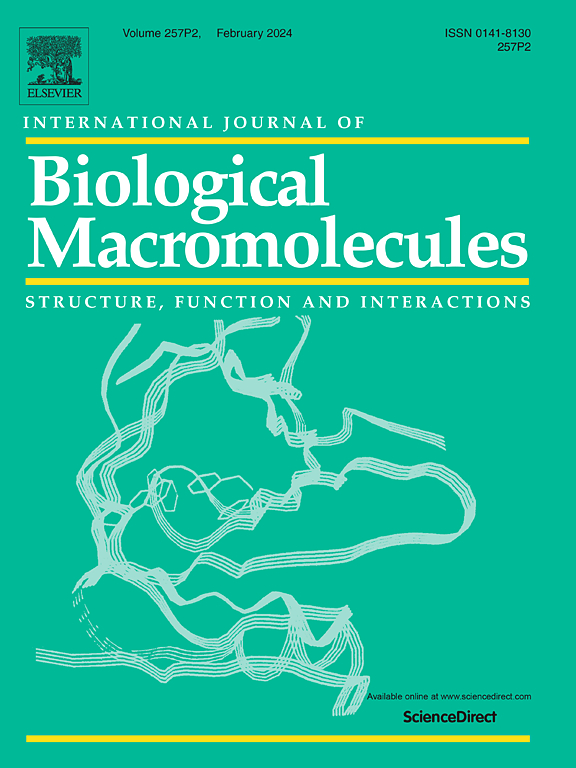sRNA STnc3020可能通过调控T3SS针复合物prgJ基因的表达参与鼠伤寒沙门菌的毒力调控。
IF 7.7
1区 化学
Q1 BIOCHEMISTRY & MOLECULAR BIOLOGY
International Journal of Biological Macromolecules
Pub Date : 2024-12-24
DOI:10.1016/j.ijbiomac.2024.139065
引用次数: 0
摘要
sRNAs作为基因表达的重要转录后调控因子,在细菌的环境适应和毒力中发挥着重要的调节作用。目的探讨sRNA STnc3020在鼠伤寒沙门菌毒力中的调控作用。本研究分析了STnc3020缺失对鼠伤寒沙门氏菌在小鼠体内的粘附、侵袭、细胞内存活、巨噬细胞凋亡和致病性的影响。此外,我们还鉴定了STnc3020的潜在调控靶基因,并验证了其调控机制。结果表明,在细胞水平上,STnc3020的缺失显著降低了鼠伤寒沙门氏菌对小鼠肠上皮细胞的粘附能力(P 5)。调控机制研究结果表明,STnc3020可与III型分泌系统靶基因prgJ相互作用,缺失STnc3020后prgJ蛋白水平显著降低(P本文章由计算机程序翻译,如有差异,请以英文原文为准。
sRNA STnc3020 contributes to the virulence of Salmonella typhimurium may via modulating the gene expression of prgJ of T3SS needle complex
As important post-transcriptional regulators of gene expression, sRNAs play important modulatory roles in the environmental adaptation and virulence of bacteria. To investigate the regulatory role of sRNA STnc3020 in the virulence of Salmonella typhimurium (S. typhimurium). This study analyzed the impacts of STnc3020 deletion on adherence, invasion, intracellular survival, macrophage apoptosis, and pathogenicity of S. typhimurium in mice. Furthermore, potential regulatory target genes of STnc3020 were identified and its regulatory mechanism was validated. The results showed that at the cellular level, the deletion of STnc3020 significantly reduced the adhesion ability of S. typhimurium to intestinal epithelial cells (P < 0.01), as well as its proliferation and apoptosis-inducing abilities within macrophages (P < 0.01). Meanwhile, animal experiment results indicated that the deletion of STnc3020 significantly reduced the colonization rate of S. typhimurium in the liver and cecum of mice (P < 0.01), and increased the median lethal dose (4.28 × 105) in mice. Regulatory mechanism research results showed that STnc3020 can interact with the target gene prgJ of the Type III secretion system (T3SS), and the protein level of PrgJ significantly decreased after the deletion of STnc3020 (P < 0.01). These findings offer new insights into sRNA-mediated virulence control and may aid in developing new vaccines and drugs for S. typhimurium.
求助全文
通过发布文献求助,成功后即可免费获取论文全文。
去求助
来源期刊
CiteScore
13.70
自引率
9.80%
发文量
2728
审稿时长
64 days
期刊介绍:
The International Journal of Biological Macromolecules is a well-established international journal dedicated to research on the chemical and biological aspects of natural macromolecules. Focusing on proteins, macromolecular carbohydrates, glycoproteins, proteoglycans, lignins, biological poly-acids, and nucleic acids, the journal presents the latest findings in molecular structure, properties, biological activities, interactions, modifications, and functional properties. Papers must offer new and novel insights, encompassing related model systems, structural conformational studies, theoretical developments, and analytical techniques. Each paper is required to primarily focus on at least one named biological macromolecule, reflected in the title, abstract, and text.

 求助内容:
求助内容: 应助结果提醒方式:
应助结果提醒方式:


